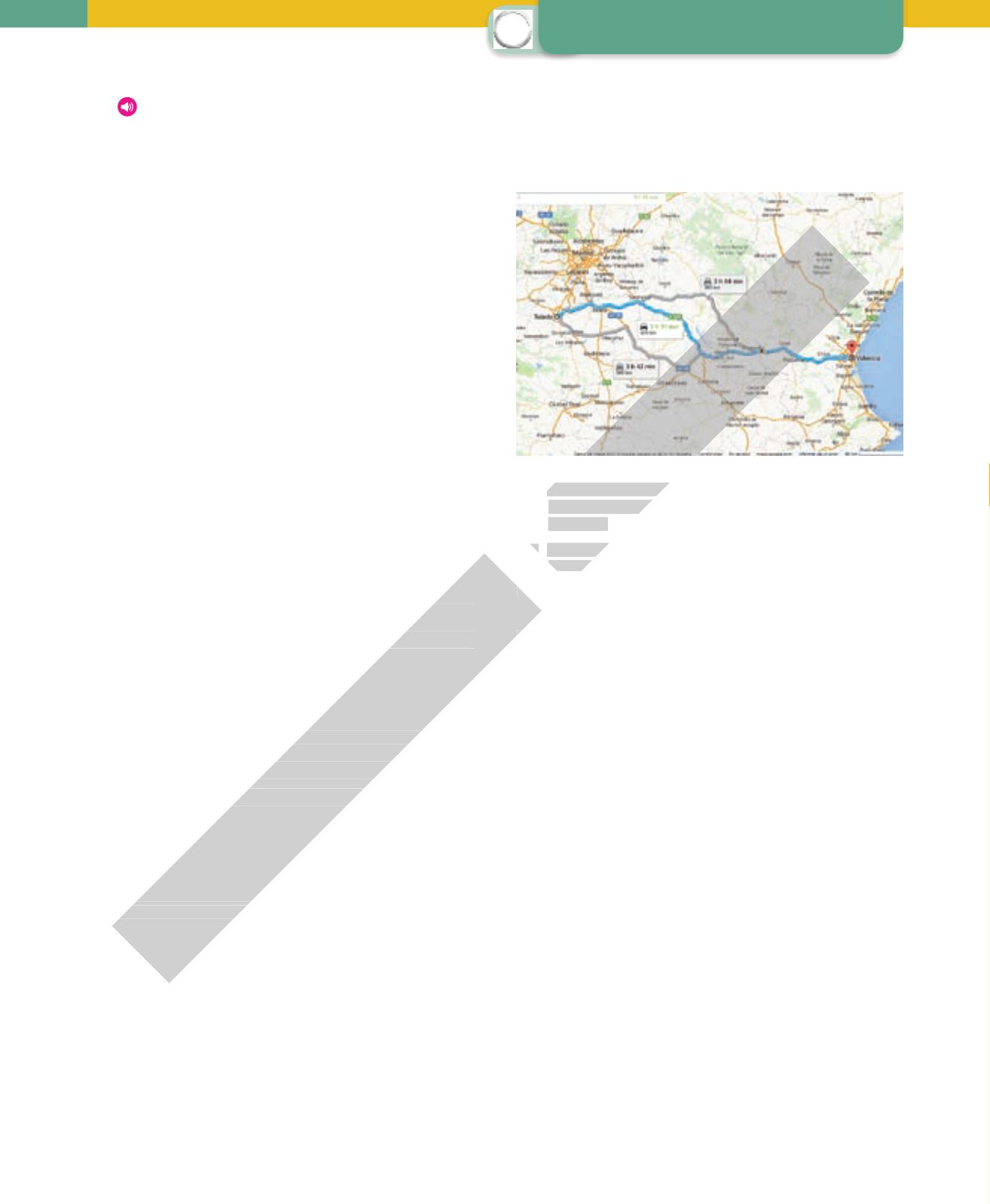
22
29.
Listen and match the definitions with the acronyms:
FTP, GPL, HTML, PHP.
30.
Explain the meaning of the following Internet phrases:
a)
I’ll
download
that file for you.
b)
My
nickname
online is Pepote.
c)
Her webpage is
hosted
on arsys.es.
d)
We didn’t read your most recent
post
.
31.
Netiquette is a setofunwrittenrules forusingthe Internet
in a polite, respectful way. Look for information about
netiquette and take notes about the most important
rules.
32.
Which tools or resources would be appropriate for the
following situations?
a)
❚❚
Danny is a primary school student in Australia. He lives
on a farm that is 70 km from the nearest school.
b)
Nora is an executive who wants to keep up with current
events, but she hasn’t got time to read newspapers.
c)
John is a high school teacher. He wants to learn Ger-
man, but there isn’t a language school in his town.
d)
Amy is studying abroad in Italy. She wants to stay in
contact with her family and friends in the UK.
33.
Would you give access to anyone on a blog or would you
restrict access to a small group of people? Explain your
reasons.
34.
What is a vlog? Find information online about vlogs.
Then look for five vlogs that interest you.
35.
Go to the Wikipedia website. Find information about
how to edit or create wiki entries. Take notes in your
notebook.
36.
Find out how you would create a Google Sites web page
with a summary of this unit.
37.
Imagine that you are using the Internet and see an
interesting image (photo, illustration, animated gif).
How can you save a copy to your computer?
38.
Find web pages that have animated gifs for you to use.
Check that you can use the gifs for free.
39.
Organise a videoconference using mobile devices (use a
Wifi service so you don’t use up your data) and a free
application, such as Skype or Hangouts.
40.
Use Google Goggles to find information about a
monument or a painting.
41.
Look at the followingmap and the routes that appear on
it. Why is there more than one route? Then find routes
from the place where you are now to another place that
you often visit, such as a shopping centre or a friend’s
house.
42.
What problems can people have when there is too much
information available to them? How can they solve this
problem?
43.
What types of sensors have smartphones usually got?
Find information about each sensor.
44.
What is an accelerometer? What types of apps can use
the information from an accelerometer?
45.
What is Bluetooth? What does it do? Where does its
name come from?
46.
Upload a photo and a document to a cloud-based storage
system. How can you share these files with other people?
47.
Take a photo with your phone and send it to someone
by email and by WhatsApp or another instant message
service. Compare the quality of the two images.
48.
After studying the two photos from the previous activity,
take notes about three ways that you can share photos
without losing image quality.
49.
Choose a file that you have created (photo, video, story,
report) and then upload the file to a blog, web page
or social network. Use a Creative Commons license and
include the appropriate image to indicate what other
people can or cannot do with your content.
CONSOLIDATION
ADVANCE
EDITION


